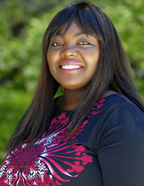Birds of a feather flock together for stem cell research
 The cellular and molecular composition of feathers can be experimentally manipulated to test the hypothesis that certain molecular components may enhance or suppress pigment differentiation.
The cellular and molecular composition of feathers can be experimentally manipulated to test the hypothesis that certain molecular components may enhance or suppress pigment differentiation.
To eventually use stem cells in regenerative medicine, scientists need to understand how stem cells become organized into particular tissue patterns and shapes. With that in mind, researchers at USC recently found clues by studying the cellular and molecular basis of complex pigment patterns in bird feathers.
Keck School of Medicine of USC researchers uncovered several fundamental rules of morphogenesis ─ the organizational process of functional cellular patterning. Their study appeared on April 25 in Science Express, the online version of the journal Science.
“Feathers are a good research model because they are unique, able to regenerate repetitively under normal conditions and are positioned at the surface of the body so that we can see their patterns,” said Cheng-Ming Chuong, the study’s team leader and professor of pathology at the Keck School. “Therefore their cellular and molecular composition can be experimentally manipulated to test the hypothesis that certain molecular components may enhance or suppress pigment differentiation.” … Read More »


